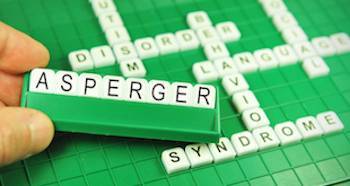
The answer to this question is straightforward. Women who have Autism Spectrum Disorder are different, not in the core characteristics of the condition, but in how they react to it.
Women tend to mask their social and communication difficulties in specific ways that are different from men. As a result, women are often under-diagnosed and/or diagnosed with a different condition. In either case, many women struggle to cope with the challenges of Autism without the benefit of needed, sometimes necessary, resources and support.
Let me explain.
Beginning with the original studies of Hans Asperger, for whom the syndrome was named, boys and men have made up a very large proportion of cases identified with Asperger’s syndrome (Autism Spectrum Disorder), largely because communicating and interacting socially is typically more challenging for males than it is for females. In fact, Autism is four times more common in males than in females.
Consequently, the diagnostic criteria for Asperger’s (Autism Spectrum Disorder) and the instruments used to detect it are based almost entirely on data from studies of males. Women, then, either fall out of the parameters of Autism Spectrum Disorder and thus are not diagnosed or, as is typically the case, are diagnosed with something else, often with attention-deficit/hyperactivity disorder (ADHD), obsessive-compulsive disorder (OCD) and anorexia.
Why Women Don’t Appear To Have Autism Spectrum Disorder
It is not just a failure of proper diagnosing that accounts for the distinction between the sexes. Women tend to mask or compensate for the symptoms of Autism Spectrum Disorder better than men do. And biological factors make a difference as well.
Studies show that women with Autism Spectrum Disorder are different from neurotypical (normal) women in how their brains analyze social information. Surprisingly, the brain of a woman with ASD is more like the brain of a typical male than that of a man with Autism.
Why is this? Several explanations make sense. Early in life, females with Autism show a greater desire to connect with people. Their interests are more similar to those of neurotypical girls. They are more likely to engage in pretend play, characteristic of girls in general. They also are less drawn to repetitive behavior. They may not be as socially active as neurotypical girls but they often have intense friendships with girls who provide guidance in social situations.
Girls, and later women, often develop coping mechanisms that cover up the trouble they have fitting in. They often use imitation or imagination, identifying with other girls and female role models in an effort to learn how to act socially. They try to figure out the best ways to stay under the radar and remain undetected. They study social situations, learning and practicing appropriate ways of behaving in social situations.
The general emphasis on girls being well behaved and compliant at school furthers the development and refinement of social skills. As a result, they stand out less than boys with Autism. Their inclination is to overcome and/or hide their challenges. As they develop and mature, the challenges of this condition appear less pronounced and cause less difficulty for them in general.
The Adult Woman With Autism Spectrum Disorder
Unlike many men, women with Autism Spectrum Disorder tend to prefer one-on-one social interactions and single friendships, often close and intimate. Although they have difficulty in group situations, they can be quite good working directly with one person.
They tend to be less solitary than men with Autism and are more likely to seek out relationships with the opposite sex, gravitating often towards long-term romantic relationships.
They typically are more sensitive to emotions in others than men with Autism Spectrum Disorder. Ironically, and sadly, the desire in women with ASD to connect is frequently painful as they encounter Autism related social and communication difficulties. Loneliness is a common complaint, and in some cases it reaches a troubling level. More than 65% of adults with ASD report suicidal thoughts, according to some studies. Of these, 77% are women, an alarming statistic given that they make up slightly more than 30% of the overall studies.
Clearly, women with Autism think, feel, and act differently than their male counterparts. But it is different, not necessarily better. A difference we should keep in mind as we try to understand, and help, those with Autism Spectrum Disorder.




